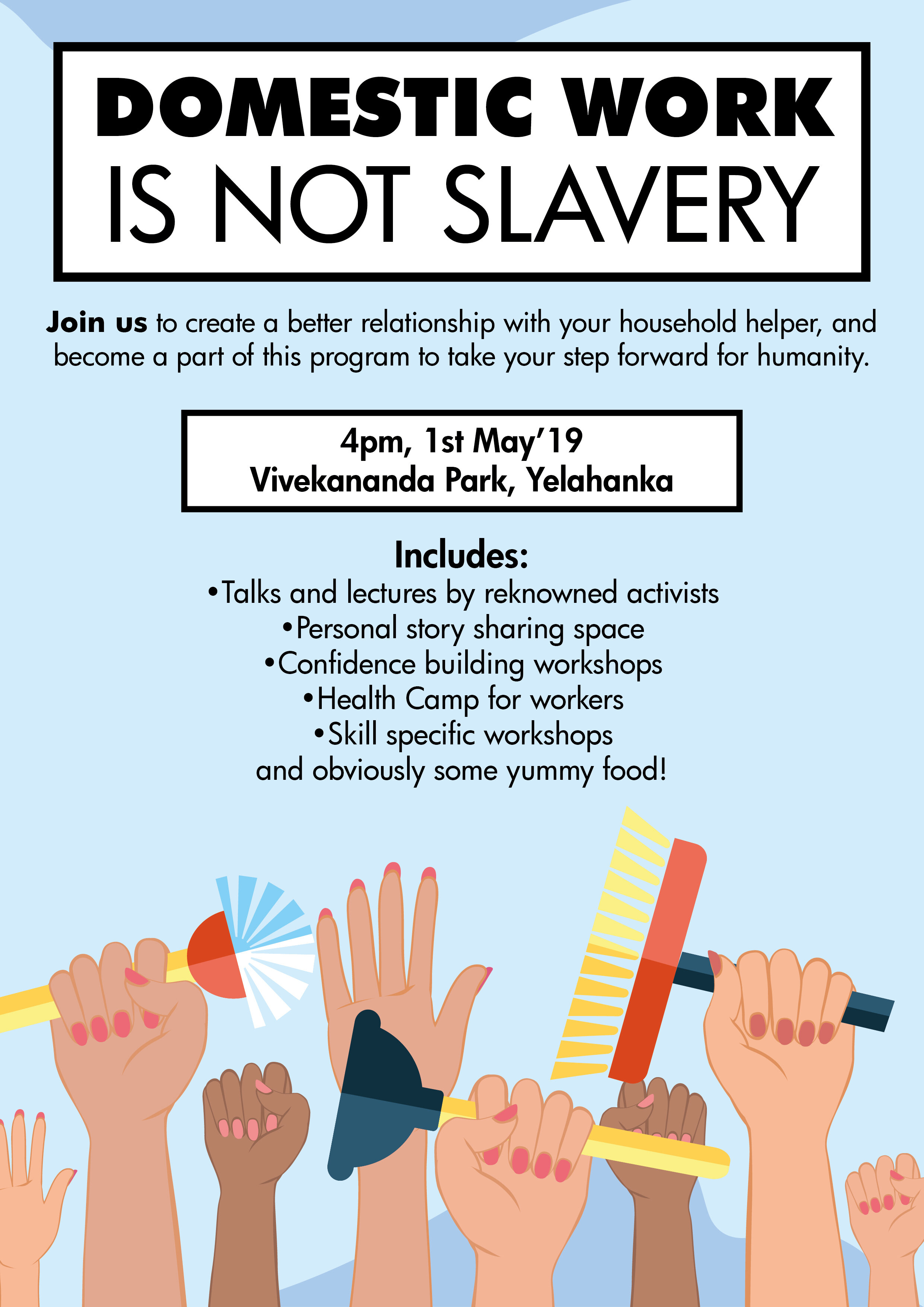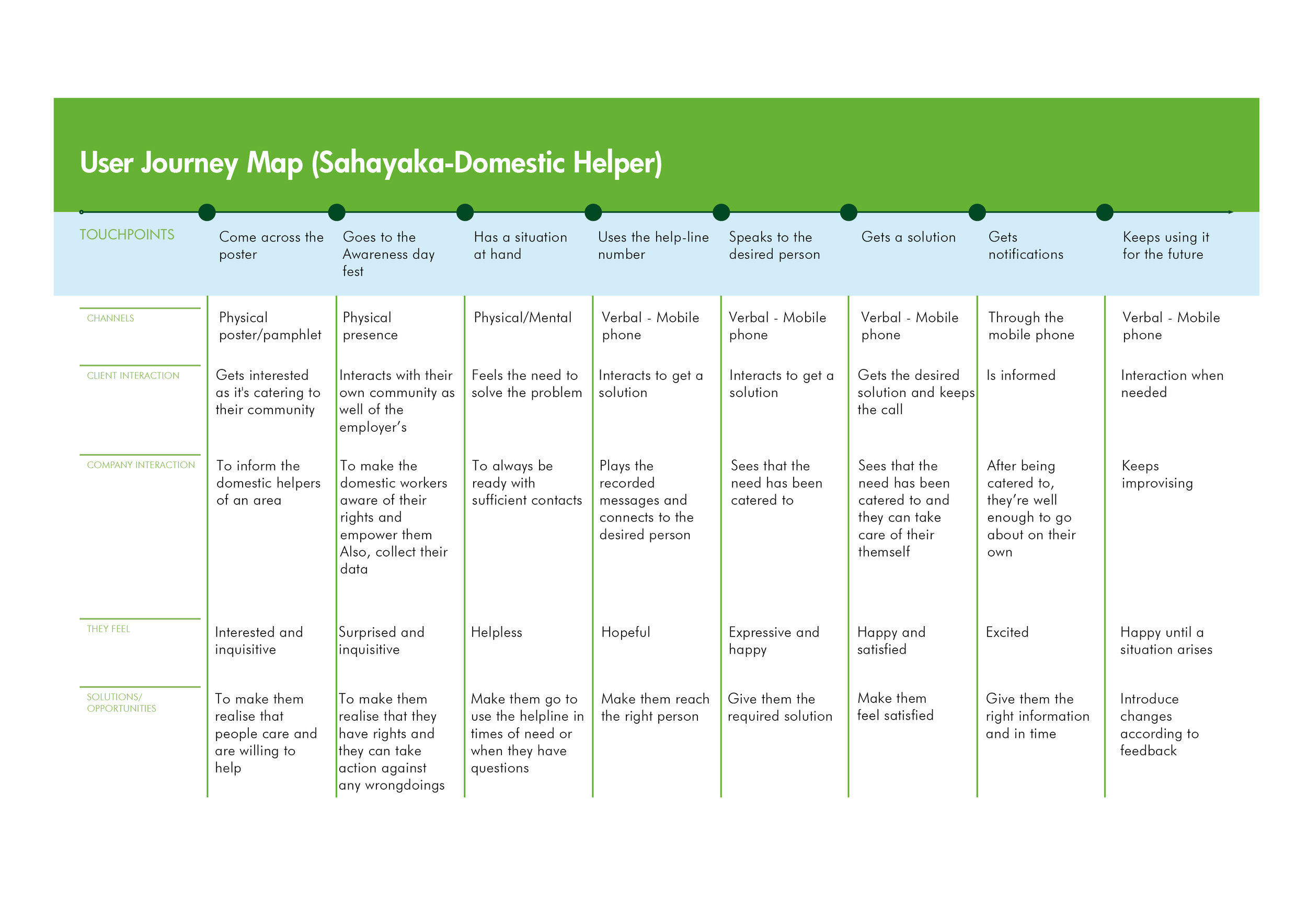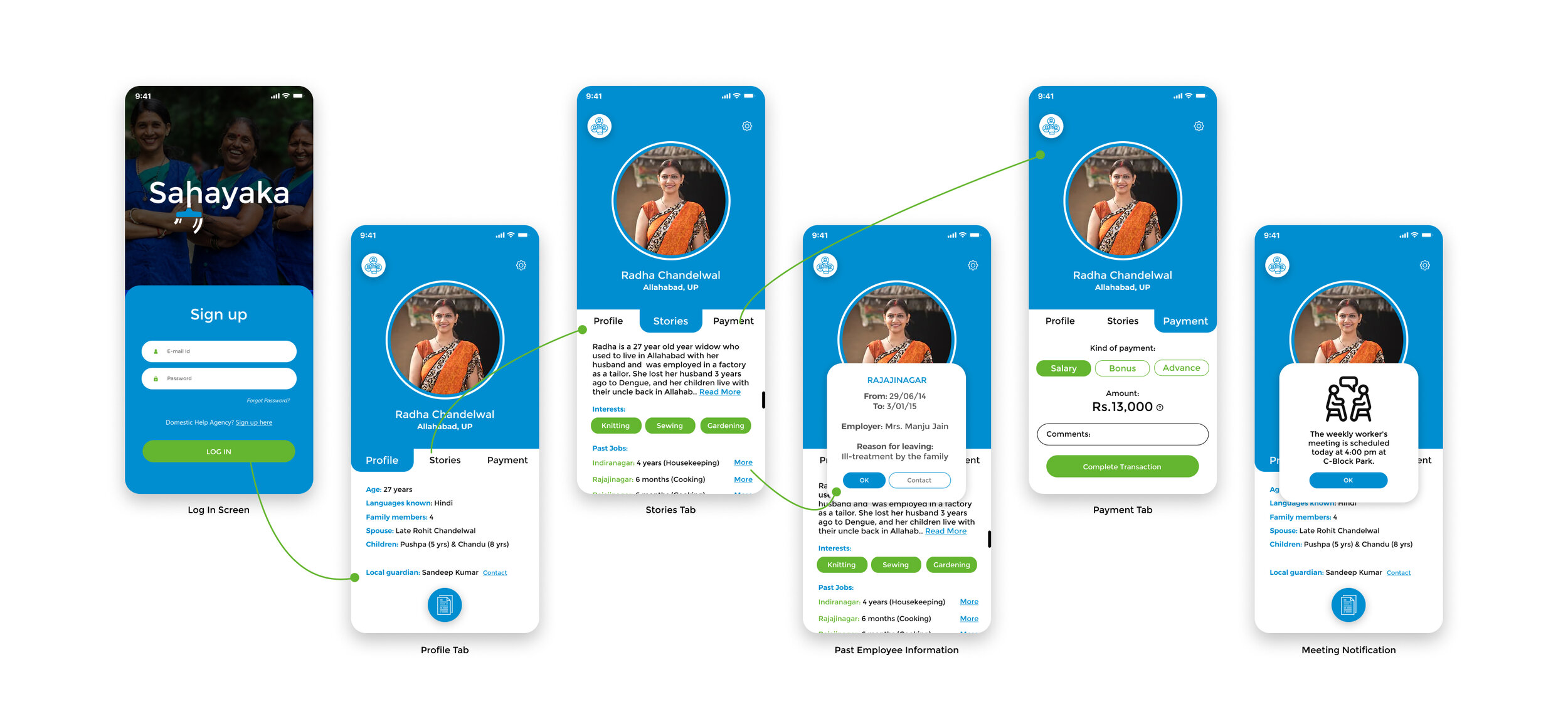
Sahayaka
Empowering Domestic Helpers
The domestic help sector of our economy is a very under-served community. They have been exploited in their workspace and have bared the effects of the slave-employer relationship from the past. Thus, one single idea wasn’t enough to provide a solution. A lot more things had to be taken into consideration to design a holistic solution which could be carried forward by the community and the rest of the society. This was an attempt to design a system to create a more equal relationship between the worker and the employer with the help of ‘Stree Jagruti Samiti’, a female domestic worker’s union run by Geeta Menon in Bangalore.
October 2019
“One of the girl’s whose case we’re fighting right now could have easily been brushed off. We believed she had committed suicide from the 9th floor of her building, and many of the neighbours said that the employers didn’t treat her well. God knows, she could’ve been pushed. It’s not unusual. When we questioned the employers about her family, they said her parents had died in the floods. Not too sure, we tried to trace the parents somehow and found her father who had no idea that his daughter was working as a domestic worker and had assumed she had run away. We’re still fighting her case and trying to get her justice alongside her father.”
— Geeta Menon, Stree Jagruti Samiti
Why?
The domestic worker’s community is a neglected group in the labour sector as people do not consider housework as a job, and the house as a workplace. This results in a very feudal relationship between the employer and the employee. Women in India already bear the burden of housing, issues of health and sanitation. More and more women (both urban and rural) move to this sector, as they already have the required skill set and do not require any other training. Also, the other labour jobs are mostly taken up by men resulting in the shift of women labour force into this sector. This sector consists of about two-thirds of urban employment. Looking at the population, the regulations to create a safe working environment is necessary. They are exploited in households as it’s a so-called ’private’ space, and there is barely any involvement with the outside world especially if you’re a live-in domestic helper.
This setting comes from the history of bonded labour in India. And even after slavery has been abolished and is illegal, there hasn’t been any significant changes in the relationship. According to India’s labour laws, working below the age of 14 is considered as child labour and families with barely any income want to involve as many hands as possible to generate income. But at this stage, the girl is the most sensitive and vulnerable as she is in her adolescence which results in harassment and ill-treatment. Most of them are kidnapped and trafficked to different states. The International Labour Organisation (ILO) has declared 16 years as the age barrier. A lot of conventions and discussions have happened in the ILO meeting over the treatment of domestic help, but India is yet to ratify these into executable laws.
There seems to be no commitment from the government to work for this sector. Most of the employers don’t even know where the helper is from and where is her family or any of her past working experiences. After all of this, their wages are also compromised. Issues and cases that come up in this sector include- sexual harassment, distrust by employers, ‘slave’ like behaviour towards them, dismissal without prior warning, no paid leaves or bonus, caste/class/religious discrimination and allegation of thefts. And these are barely reported as they have no channels to get this out to the real world.
Understanding the Employer








User Personas
User Personas were created to understand the aspirations, fears and motivations of the people I was designing the system for.



Possible Interventions







Use-Case Scenarios





Proposed System Design and Logistics
Poster for the Event
A space for everyone to get everyone in the same space, talk to each other and participate in activities.
User Journey Maps
Using the Helpline Number
I used the ‘Wizard of Oz’ method to demonstrate how the Helpline number would work, along with a few examples of the text messages.



Wireframes for the Application
Implementation and Feedback
I feel I might have made some assumptions as this was a two-week project. I would like to be able to test the basic interactions of this system and get feedback regarding the system design. Introducing the system to a government institution with the help of Stree Jagruti Samiti is the goal.








